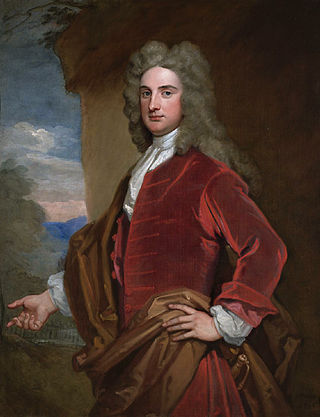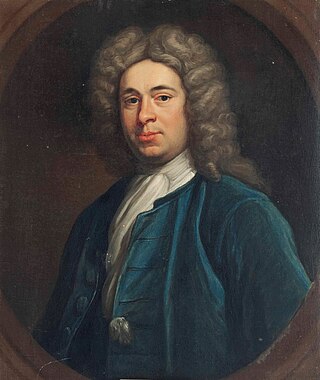Related Research Articles

Peregrine Bertie, 2nd Duke of Ancaster and Kesteven, styled The Honourable Peregrine Bertie between 1686 and 1704, Lord Willoughby de Eresby between 1704 and 1715 and Marquess of Lindsey between 1715 and 1723, was a British politician who sat in the House of Commons from 1708 until 1715 when he was called to the House of Lords.

Sir George Bowes was an English coal proprietor and Whig politician who sat in the House of Commons for 33 years from 1727 to 1760.

Sir John Rushout, 4th Baronet, of Northwick Park, Worcestershire was a British Whig politician who sat in the House of Commons for 55 years from 1713 to 1768. He was a supporter of Pulteney in opposition to Walpole, and was briefly part of an Administration. He was Father of the House from 1762.
Sir Thomas Charlton Meyrick, 1st Baronet, known as Thomas Charlton until 1858, was a Welsh Conservative Member of Parliament.

Sir Edward Walpole KB PC (Ire) was a British politician, and a younger son of Sir Robert Walpole, Prime Minister from 1721 to 1742.
Hugh Williams, of Chester, was a Welsh Whig politician who sat in the House of Commons from 1725 to 1734.

Apley Hall is an English Gothic Revival house located in the parish of Stockton near Bridgnorth, Shropshire. The building was completed in 1811 with adjoining property of 180 acres (0.73 km2) of private parkland beside the River Severn. It was once home to the Whitmore & Foster families. The Hall is a Grade II* listed building claimed as one of the largest in the county of Shropshire.

William Clayton, 1st Baron Sundon of Sundon Hall, Sundon, Bedfordshire was a British Treasury official and politician who sat in the House of Commons from 1716 to 1752.

Sir John Evelyn, 2nd Baronet was a British courtier and Whig politician who sat in the House of Commons for 40 years from 1727 to 1767.
Thomas Clutterbuck was a British politician who sat in the British House of Commons from 1722 to 1742 and in the Parliament of Ireland from 1725 to 1742.
Robert More FRS, of Linley Hall, near Bishop's Castle, Shropshire. was an English academic and politician who sat in the House of Commons between 1727 and 1761. He was also a noted amateur botanist.
Edward Conyers was an English barrister and Tory politician who sat in the House of Commons between 1725 and 1741.
Thomas Whitmore, was a British soldier and politician who sat in the House of Commons for 24 years from 1771 to 1795.

Sir William Gordon, 1st Baronet was a Scottish politician who sat in the House of Commons between 1708 and 1742.
Sir William Middleton, 3rd Baronet of Belsay Castle, Bolam, Northumberland, was a British landowner and Whig politician who sat in the House of Commons for 35 years from 1722 to 1757.
Harry Waller was a British lawyer and Whig politician who sat in the House of Commons from 1726 to 1747.
Jacob Banks, of Milton Abbas, Dorset, was a British politician who sat in the House of Commons between 1726 and 1738.
John Weaver (1675–1747), of Morville, near Bridgnorth, Shropshire, was a British lawyer and Whig politician who sat in the House of Commons from 1713 to 1734.

John St John of Lydiard Tregoze, Wiltshire, was a British politician who sat in the House of Commons from 1727 to 1734.
Sir Thomas Whitmore of Apley, near Bridgnorth, Shropshire, was a British Whig politician who sat in the House of Commons from 1734 to 1754.
References
- ↑ "CHARLTON, St. John (d.1742), of Apley Castle, Salop". History of Parliament Online. Retrieved 13 March 2019.